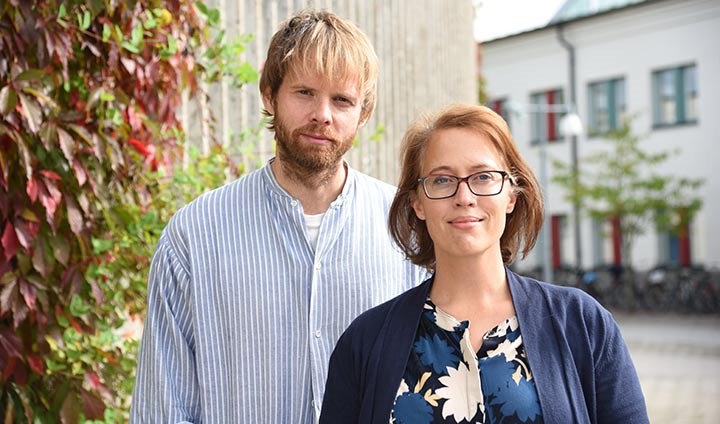New book on how to work against racism in schools

Jan Jämte and Emma Arneback experience that there is great uncertainty amongst teachers on how to deal with racism.
All schools have a clearly defined mission to work against racism. Nevertheless, studies show that racism is a problem in many preschools and schools in Sweden. In a new book, Örebro researchers Emma Arneback and Jan Jämte describe how to counteract racism in education.
"Preschools and schools should work to create equal opportunities for all children and teenagers to learn and develop. Racism is an obstacle to this."
This according to Jan Jämte, Senior Lecturer in Social Studies at Örebro University, who together with his colleague Emma Arneback, Senior Lecturer in Education, has written the book, "Att motverka rasism i förskolan och skolan" (How to Counteract Racism in Education).
Structural discrimination and racist violations influence children and pupils negatively, creating different opportunities and conditions depending on what you look like, where you come from and what you believe in. In the end, racism creates an unequal distribution of life chances, privileges and power in society, as well as in schools.
"The book will help educators to deal with a very complex problem. Teachers from pre-school and up should have the means to analyse and understand racism in relation to their work as teachers," says Jan Jämte.
Different actions for counteracting racism
"In our book, we present different courses of action that educators can use to deal with the various forms and expressions of racism," adds Jan Jämte.
These methods can be applied to racism both on the personal level and on a structural level. On the personal level this concerns racism in the form of opinions and actions. On the structural level, the school organisation, the focus of its activities and the attitude of its staff is at the core. The book contains exercises and cases which educators can use as a starting point in their work.
"While we meet many teachers who are dedicated, at the same time, we see a great deal of uncertainty in how to deal with racism. But there is also uncertainty in the teacher's own role and their own responsibility," emphasises Emma Arneback.
Emma Arneback and Jan Jämte point out that there are no quick and easy solutions applicable to all situations. For example, dealing with widespread beliefs and prejudices about certain groups requires a certain kind of educational tool. Dealing with persons who are members of racist organisations, or calling out and challenging norms, require yet another.
"The key is that preschools and schools are charged with the mission to actively counteract racism. Policy documents that regulate school activities provide educators with strong support to pursue this mission in their work," says Emma Arneback.
Schools are not isolated
In one of the book's chapters, the authors discuss different ways of understanding and analysing racism.
"We want to challenge the dominating understanding of racism that has existed in Sweden, which tends to explain racism as an ideology based on the assumption that biological races exist and are not equal. But racism can also can also spring from a number of notions, prejudices or ideas, and may be working on both the personal and structural levels," explains Jan Jämte.
In reality, it is biological, cultural and religious aspects that interact to justify the exclusion or discrimination of certain groups.
Emma Arneback points out, "Schools are not isolated. Society's opinions and attitudes are also reflected in pre-schools and schools, as well as in its educators. That is why it is important to be aware of the fact that schools may indeed be a part of the problem that they are supposed to solve."
Text: Jasenka Dobric
Photo: Linda Harradine
Translation: Jerry Gray
